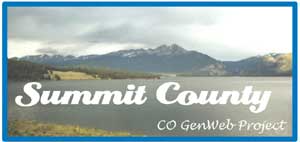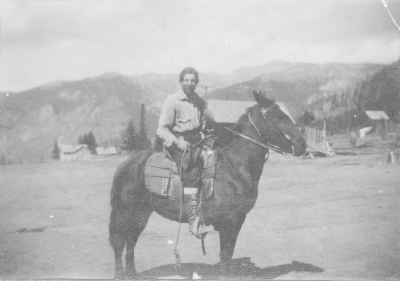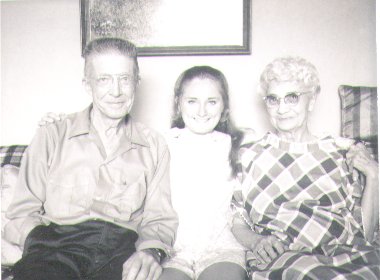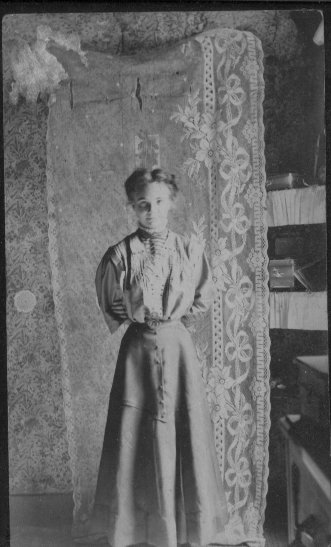 |
SUMMIT COUNTY, COLORADO A COGenWeb PROJECT a proud partner of USGenWebģ |
SUMMIT COUNTY TALES |
 |
SUMMIT COUNTY, COLORADO A COGenWeb PROJECT a proud partner of USGenWebģ |
SUMMIT COUNTY TALES |

Here is Everett Hugh Brines at about age 20 in Summit Co., Colorado

Here are Mr and Mrs. Everett Hugh Brines in 1968 at age 78 with their grandaughter, Patricia Smith.

Daisy Irene Allen was the daughter of Homer Glenn Allen (b Indiana July 22, 1870 died about 1950 Garden City, Kansas) and Martha Matilda Mize (b January 6, 1874 Mayetta, Kansas d January 10, 1939 Frisco, Summit Co., Colorado). This picture was taken in Montezuma, Summit Co., Colorado when Daisy was about 18 years old. She was born January 6, 1893, Fairview, Brown Co., Kansas and died January 30, 1975 in Arvada, Colordao; buried Mt. View Cemetery, Boulder, Boulder Co., Colorado. She met my grandfather, Everett Hugh Brines in Montezuma and they were married January 6, 1916 in Leadville, Lake Co., Colorado.
Return to Home Page